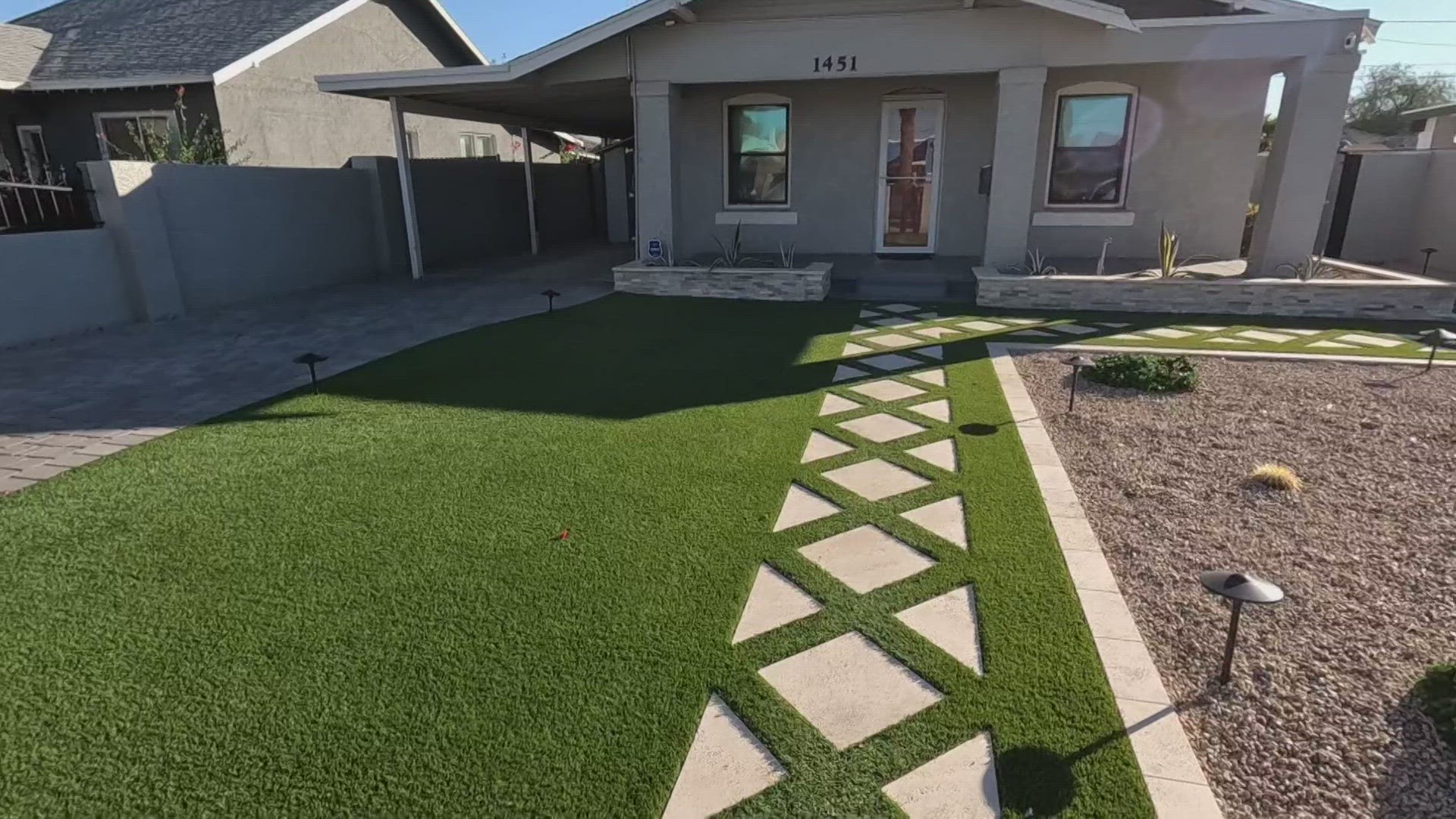PHOENIX — Fake grass might sound like a great alternative to the water-loving lawns at homes in the Valley – but experts say that's not the case.
“It's dangerous for you. It's dangerous for your pets. It's dangerous for your kids and it's dangerous for your neighbors,“ said Kyla Bennett, the director of science policy at Public Employees for Environmental Responsibility.
Bennett studies the environmental impacts of artificial turf.
VERSIÓN EN ESPAÑOL: El césped artificial está repleto de microplásticos y son peligrosos para todos los que viven alrededor
“There is never a circumstance where I would recommend artificial turf,” she told 12News.
Bennett said a new study shows the plastic plant releases forever chemicals called PFAS into the soil and any adjacent wetlands or water.
"These PFAS can leach right off these artificial turf fields and get into your drinking water and that would require multimillion-dollar filtration plants to take it out and treat it,” Bennett said.
The artificial turf is filled with microplastics, and experts say they don't know the full extent yet of where these plastics end up.
“They weigh a ton," Bennett said. "They're very very heavy, this plastic, and oftentimes they use crumb rubber as an infill and there's no place to recycle them.”
Fake grass and heat
Professor Ariane Middel with Arizona State University's Shade Lab tested the ground temperature of different surfaces on a hot June day and found artificial turf to be significantly hotter than others.
“We knew it would get hot but it was very surprising that it got that hot,” Middel said. “[The turf] was 154 degrees Fahrenheit and asphalt came in at about 147.”
Real grass stayed below air temperature, she said.
"It will definitely have an impact on how you enjoy your backyard,” Middel said.
Native grasses
So how do you choose between the two?
Entomologist Shaku Nair at the University of Arizona said you don't have to think of alternatives. Instead, she said, there are several native grasses and other plants in Arizona that require up to 40% less water than grass and are safe for the surrounding environment.
“You don't have to have a grassland," Nair said. "There are other options, right, if it's just the green that you want, there are other options for that.”
RELATED: Valley cities offer neighbors incentives to switch to more drought-tolerant yards and plant trees
Water Wars
Catch up on the latest news and stories surrounding Arizona’s water crisis on the 12News YouTube channel. Subscribe today.

